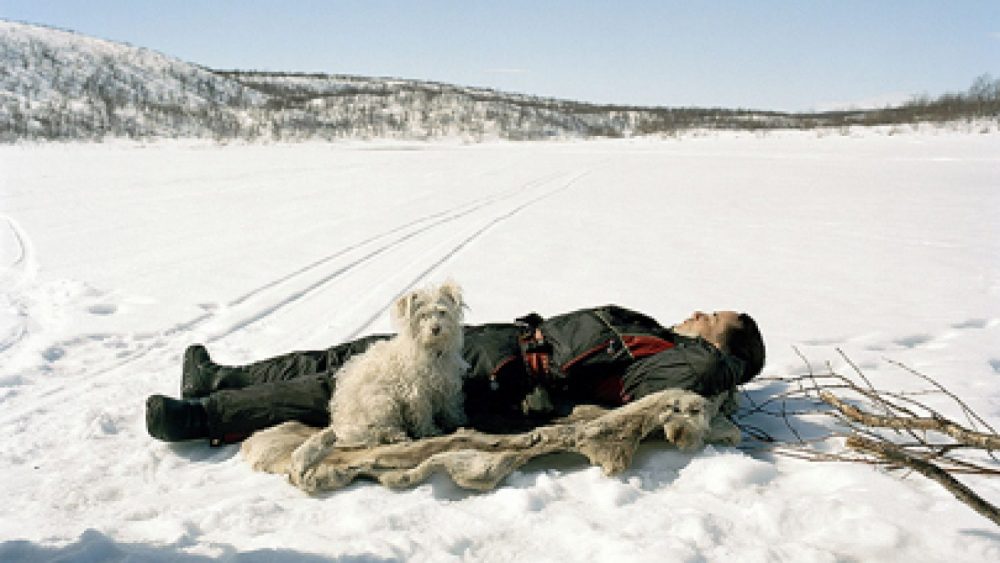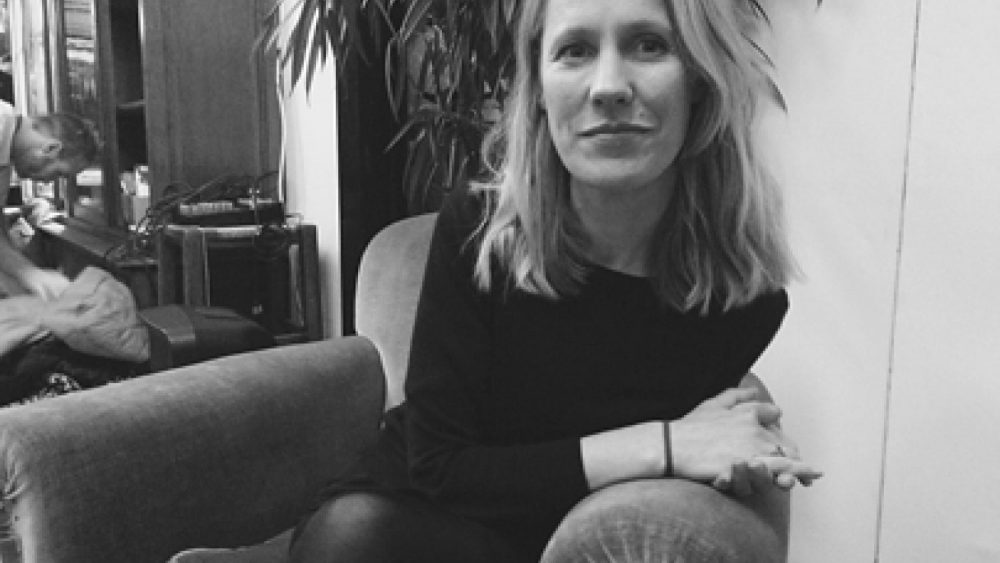Interview with Heikki Kaski
“Man is always in danger of confusing his measures with the world so measured (..) to the degree that he identifies himself and his life with these rigid and hollow frames of definition, he condemns himself to the perpetual frustration of one trying to catch water in a sieve.” These sentences written by Alan Watts, a cult figure in bringing Eastern philosophy to Western readers, come to mind viewing Heikki Kaski’s (1987) Tranquillity, which feels very much about this anxiety. It might not be specifically about the teachings of Zen philosophy, but the work touches a very deep sense of frustration in our culture or in our being. Which one – who can say?
Tranquillity is a small town of 800 people in California’s Central Valley. As a person who has never visited it, I would guess that Tranquillity is quite an unspectacular place, one of many of its kind. Heikki’s images bring out the uneasiness within the everyday life of the town in a strikingly precise manner, making it very easy for the viewer to relate with his sense of anguish.
Tranquillity has won numerous prizes, notably the Unseen Dummy Award in 2013. Afterwards, the series was published by Lecturis, and the book is now sold out. In 2015 Heikki was shortlisted for the Aperture Portfolio Prize and was named as one of the FOAM Talents. Tranquillity can now be seen in the Riga Photomonth exhibition Territories, among other places.

What I find really interesting in Tranquillity is that in a way it is about a place, but then when you look at the pictures, it seems more about a state of mind. What is the project about for you?
Yes, for me it’s both of those things. I thought it was interesting to keep to this specific space, and at the same time make it about something else. I got inspired by the vibe that I got from Tranquillity, but I also think it’s very problematic to say that you could convey the same mood in the pictures. It might not even be possible to do that – there is a special feeling in the place and then you shoot it… How can you claim that it is in the photos? I’m not sure. It becomes something else.
What I’m shooting now is completely free, I can work on it wherever I want, but at that point I felt I still needed some kind of restrictions. It wasn’t a clear-cut decision, like, “ok, now I’ll start this project.” I just started doing it. I never planned to tell a perfect story about the place. From the start I was very free with shooting whatever I wanted. In my way of working I find my own set of restrictions – the police in my head. A big part of what I want to do in photography, in my daily practice, is to be free in that actual situation of taking pictures, so that I’m not bound by restrictions of history or of form, formality or aesthetics. In a political sense this statement is a bit difficult, but on a personal level, when I shoot I try to be as unrestricted as possible.
Then when you put [the images] in a book, you have to think about these things – how will other people get it? They all talk about [the ways of doing that], but nobody knows how it really works. [Tranquillity] is more about some sort of possibility. It’s not a straightforward representation of anything or anyone. Yeah, it’s connected to a specific site, but from the beginning what I wanted to shoot had to do with taking a picture of this doubt that I had, and visualising this inner turmoil. Maybe the doubt was a metaphor for some kind of internal aggression about to burst. And I think that has something to do with coming from outside and looking in, also as a person from Scandinavia. It’s somehow muted.
In a way I feel your work is quite political. Of course, the photographs are very aesthetic and can exist without this dimension, but I feel it also speaks about an attempt to get out of a system that we are living in. That is where I see something about to burst.
I don’t want to say that my photography book is about the political situation in the US – that could potentially be ridiculous. If I wanted to be politically active, I would go write something on Twitter. Who would say something like “I’ll go show them my photobook, and then they will really get it?” It’s not very viable. But it is of course political on some level, but not as… How should I put it? It doesn’t call to direct action or do anything in that sense.
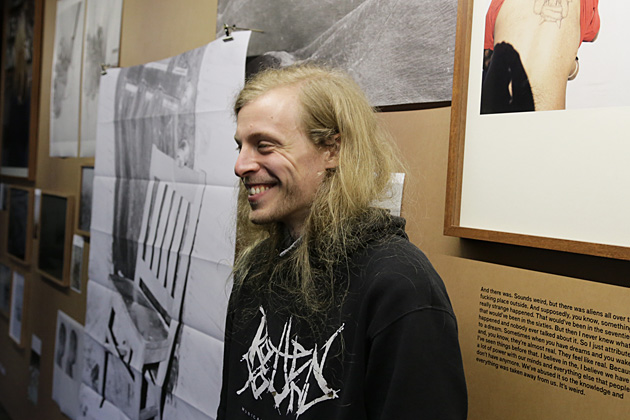
I was thinking about politics more in the sense of a culture concentrated on achievement and consumerism, and then searching for a way to get away from that. Trying to find peace but during that search actually getting more anxious.
That was what the first picture of the project was about. Before this [project] I was shooting new housing areas in Finland. I was trying to be critical towards that. That is of course a very common sense of disapproval, but there was also this idea of escapism connected to Tranquillity. Maybe that also connects to the last frontier of the West, California. There is always the dream of that spot, and then of course it’s never there. There is no such place.
You knew from the beginning that the project would become a book.
I really wanted to make a book. I didn’t know anything about the culture of photobooks. I really liked the idea that you could have this small vessel that would contain a private viewing experience as opposed to a presentation in a white cube. Also, a publication provides the possibility of putting many pictures together without making a single image. I was really shooting for the book, but I didn’t know what it would be like at all. Probably in the beginning I thought it would consist of portraits.
At the moment I’m not that into books, but at least there are more people who look at them in comparison to the amount of people who would go see my or anybody else’s show in some small town somewhere in the North. In that way, books are really nice, but at the same time now there are a lot of silly things going on with them too.
How much did your original book idea change after you won the Unseen Dummy Award and got to collaborate with the designer Hans Gremmen?
It won the Dummy Award in 2013 and back then it looked really different. It had maybe 30% of the photos that it has now. I wanted to take time and shoot more [before publishing it].
Hans Gremmen helped me with the design and in the end it turned out like I wanted it, there were only a few details that didn’t turn out the way I wished. Of course now I would change a lot of things, but it is what it is. It’s ok. I’m very controlling in terms of how I want things to look like. [For the exhibition in Riga] I did all of the prints and frames myself. But things like typography I’m not good at.
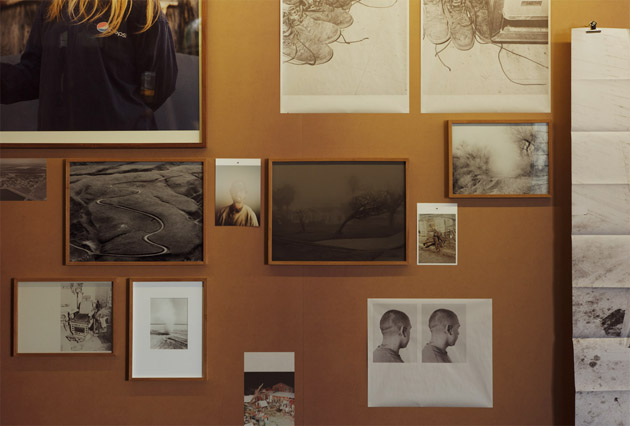
Your installation in Riga consists of prints in all sorts of shapes and sizes. How do you decide on how to exhibit your photographs – do you figure it out before actually arriving to the space, or you do the prints and then just go to the place and decide how to put them up?
Yes, that’s sort of what I did. I made a plan and then I printed everything. I printed a lot of extras too and decided what to do when I got there. I’m invested in the idea of trying to use the space in some sort of other way.. At the moment I have access to a lot of different printing techniques and I’m also interested in using them. I’m trying to look for another way of making a photography show instead of it being just frames on walls and some sort of laminated A4 description with the title, where the person goes inside, looks at the text, the pictures and juxtaposes only those two things. I think there are possibilities to do all kinds of different stuff.
Last week I had a show in this big hallway in Gothenburg – a performance with two piano players. It [was a way to somehow] expand the idea of a photo show. In the installation here I wanted to do something that would represent a map-like investigation – a wall with no clear starting picture and no clear ending picture. The prints in Riga will be destroyed once I take them off the wall, as I have glued them directly to the surface. They don’t have any commodity value in that sense. But isn’t that the worst thing that some commentator could say: nice frames, right?
Really it doesn’t matter that much. But then again I’m completely controlling. I say that it all doesn’t mean anything and that all of it will just get destroyed, but at the same time I have planned all of it. I think photo shows in general should somehow take [the location] more into account. It doesn’t mean that the show has to be site specific in the sense that I should put something on the trains [if I’m having an exhibition in the Railway museum], but just something that is not about these framed glassed objects that just go around from place to place.
It seems a lot nowadays is about form and less about content.
I’m not saying there is a right or wrong way, but there’s a history of photography exhibitions that isn’t straightforward – it hasn’t always been the same.
The genealogy of MoMA directors from Beaumont Newhall, to Edward Steichen and then to John Szarkowski nicely shows how photography has been interpreted [over time] in the gallery space in one of the big art institutions. There have been different ways [of exhibiting photography], but with Szarkowski when the market really jumped in, then it really became about small prints, frames and glass. Everything perfect in an edition of 5. Something like that still lives on in many ways.
[An exhibition] doesn’t have to be made in one particular way, and it shouldn’t be too big of a statement to do it in some other way either. Photography has this glass ceiling [around it], and I feel there are so many things you can and cannot do. We’re faced with this all of the time – you need to have a project description, and if you don’t have it, that raises questions. But in another field, they might say – do whatever you want.
With this piano thing, I tried to incorporate something within a photo exhibition that is not normally there. It consisted of two pianos playing a custom piece. One of the performers was a professional pianist, the other – an amateur. They worked together, and it was on two different levels at the space so there wasn’t only one big audience for it. I don’t know.. Nobody is getting paid, so why not do something more exciting (laughs).
Are you also trying out other mediums, like, video for example?
Yeah, I also had a couple of videos in the show, but I’m not doing a lot with it. It’s a bit scary to do other things [besides photography]. Photography is so monotonous in a way – it’s simple and repetitive, and sometimes it’s more like an exercise, like, jogging for example. You just do it all of the time. Personally it’s not about having this grand intention, and then I decide: this is a perfect idea to communicate through photography.
For me it’s been about the picture for a while, and then it’s scary to suddenly think: yeah, it doesn’t need to be an image, it can also be a video or sculpture or something. But I have some history with music so [this show] felt like something I wanted to do, but after it was finished, I really got a sense that I did this, but I could have done so many different things. Whilst the photographs are more exact.
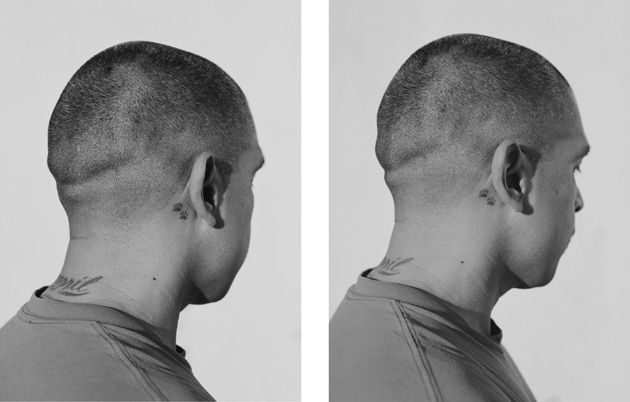
I feel that we are often pressured to do a lot and fast, but it takes time to do something meaningful. In other words – less can be more.
Yeah, I wish it didn’t [take a lot of time]. I wish I could do a lot of things fast, but I realized when I was doing the Tranquility book that I really could see how much better it got with time, both for me and in the eyes of others. It became more solid. And it could still become more solid. Like, now when I did the prints, I made some small adjustments. It’s so boring that you have to work on editing for six months and then you look at the amount of pictures in the end, and you have about 60 photographs. It’s a small amount for two years of work but it isn’t possible to do it faster. Maybe some people can but not me. I mostly end up doing things that interest me and that usually changes over time, it doesn’t always stay the same.
Gordon MacDonald had a great talk in Riga, stressing the significance of creativity and collaboration, basically, the importance of doing what you want. He talked about this underlining the fact that creativity is often lost with the ambition of us becoming auteurs.
Yes, the photo scene is definitely not very crazy. A lot of things are lost when you have this project based thinking – descriptions, grant applications, social utility, etc. There are certain types of things that work well with grants, and other kinds of vocabulary that maybe doesn’t, and then photographers of course adapt. A lot of things are lost in this cavity, and also that creative community moment that you are talking about.
That’s why I thought that the event here was really nice, as essentially you understand how small the scene is in a way. You’re just having conversations with people, and it doesn’t make sense to make up a presentation for that as if you were a startup entrepreneur. It doesn’t make any sense when you see the same faces around that you just saw in the bar.
I heard you took some pictures in Riga. Can you tell me what are you working on now?
I’m working on a big project that is [continuously] expanding. It’s not about Riga, but I’m also shooting here. But I’ve been shooting all kinds of things.. That’s what I do and then I later check what comes out of it.
I’m not sure what the outcome is going to be yet, but it’s going to take some time, and I’m trying to take all of the time it needs. It’s going to be hard to put it a coherent sentence, but it’s definitely not connected to a specific place. It has something to do with devotion and religion.


